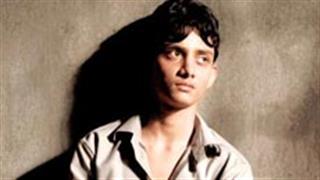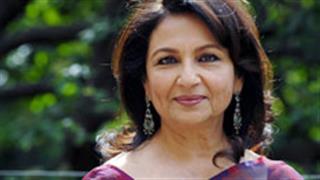Friendships in the film industry are brittle. Egos, image-conscious stars and the theory of the survival of the fittest hardly allow any friendships to endure. Amid this, a friendship that survived the times was the one between Dev Anand and Guru Dutt. Had the latter not separated from Anand's production house, Navketan, and later committed suicide, the country would have seen classics from the duo.
In the late '40s, Dev was struggling to find a foothold in the industry. He was with Prabhat Studio, Pune. Guru was also a struggler desperately looking for a break as a director. The two met in Mumbai by chance, and a strange one at that.
A washerman, common to Dev and Guru, mixed up their shirts. The two eventually met and Dev noticed that Guru was refreshingly sensitive.
Guru, on the other hand, spotted a rare romanticism in Dev. Both dreamt of working together and Dev promised Guru a break as a director if he ever turned producer.
The dream did come true. After Anand started Navketan, he asked Guru to direct Navketan's second film, Baazi in 1950. It was a meaningful, urban crime thriller starring Dev, Geeta Bali and newcomer Kalpana Kartik. Based on a gripping story by Balraj Sahni, Baazi made a strong social comment, too. The immortal Sahir Ludhianvi-SD Burman combination came into vogue with Baazi.
It was then Guru's turn to give his best for his dear friend. In Baazi, Guru exhibited his unique style and showed expertise in song sequences. However, Guru was under-confident when it came to the film's climax and, unexpectedly, even went into hibernation at Mangalore.
Dev's elder brother, Chetan, shot the climax to some extent and persuaded Guru to return. Chetan and Dev restored confidence in Guru and he completed the post-directional work.

Baazi was a huge success and permanently established Dev as a star and Guru as a legendary director. Guru was a regular visitor at the Anand residence at 41, Pali Hill. After Baazi, Guru separated from Navketan and decided to do something on his own. The decision mainly had to do with his creative differences with the more versatile Chetan.
In 1952, Guru directed Jaal starring Dev and Geeta. The superhit enhanced Dev's image as the golden-hearted romantic anti-hero. The nation fell head-over-heels when Dev lip- synced the evergreen song Yeh Raat Yeh Chandni for Hemant Kumar in Jaal.
Guru and cinematographer VK Murthy shot the haunting song at five lakes in Goa in soft light to bring out the subtlety of the composition. Guru was among the few who could fathom Dev's depths as an actor.
Just as Geeta was a sister to Dev, Kalpana, who married Dev, was Guru's 'Mona Bhabhi.' He was among the first to attend Dev's midnight marriage on the sets of Taxi Driver in 1954 and cheer the couple.
Soon after Jaal, Dev rose to newer heights of stardom with Taxi Driver (1976), House No 44 (1955) and Munimji (1955). Dutt turned producer, director and actor of substance with Aarpar (1954), Baaz (1953) and Mr And Mrs 55 (1955). As an actor, though, he never thought of Dev as a rival - a sentiment Dev reciprocated. Anand went on to prove himself as the best romantic actor of his times. Guru proved that his sensitivity was his asset as director.
Guru's chief assistant Raj Khosla, who had already proved his merit with Milap (1972), was given a coveted break by his mentor to direct CID in 1956. Stepping aside as hero, Guru brought in Dev to play the lead and introduced Waheeda Rehman in the same film.
Dutt contributed with a lot of creative ideas but never interfered with Raj's direction, in spite of being the more gifted of the two. CID celebrated its silver jubilee throughout the nation and remains Dev's best detective film till date.
Though they all worked separately after CID, Guru was highly instrumental for the success of Navketan's production, Kala Pani, in 1958. Raj and Guru brought in Lachhu Maharaj to choreograph the immortal songs, Nazar Lagi Raja and Hum Bekhudi Mein. Khosla shot all the intense court scenes of the film under Guru's guidance.

In 1960, however, there was a sudden crack in the Guru-Dev relationship. Dev had a string of flops and went to Guru with the hope of reviving their team to deliver a much-needed hit. Guru, however, refused and asked Dev to opt for another director. A hurt Dev vowed to never turn to his friend for help. Earlier, in 1959, Kagaz Ke Phool had flopped and left Guru shattered. He lost interest in life and began drinking heavily.
However, a more disciplined and optimistic Dev regained his lost popularity with hits such as Kala Bazar (1960), Jab Pyar Kisi Se Hota Hai (1961) and Hum Dono (1962). In 1961, Guru realised his folly and recommended Dev as a hero for Maya to director DD Kashyap.
Though Guru regained success with Chaudhivian Ka Chand (1961) and Saheb Biwi aur Ghulam (1962), he quit direction soon after. On October 6, 1964, he came back to Dev with the idea of directing him and Waheeda in a serious, social film for Navketan. He was bent on Vijay Anand, Dev's younger brother to edit the film. Dev welcomed his true friend back with open arms.
However, the duo was not meant to see a partnership again. Four days after the conversation, Guru committed suicide. His last words were, `Main bahut thak gaya hoon, thoda sona chahta hoon. (I am too tired. I want some rest)`. The news shocked Dev who cancelled his shooting for Teen Deviyan (1965).
It was a pathetic sight - a sobbing Anand holding the dead Guru's hand and repeatedly saying, `Guru uth. Kahan chala gaya tu (Guru, get up. Where have you gone?)`. Consoling a speechless Geeta, Dev broke down. Remembering this immortal friendship seems the best way to commeorate the evergreen star on his 89th birth anniversary, on September 26.













